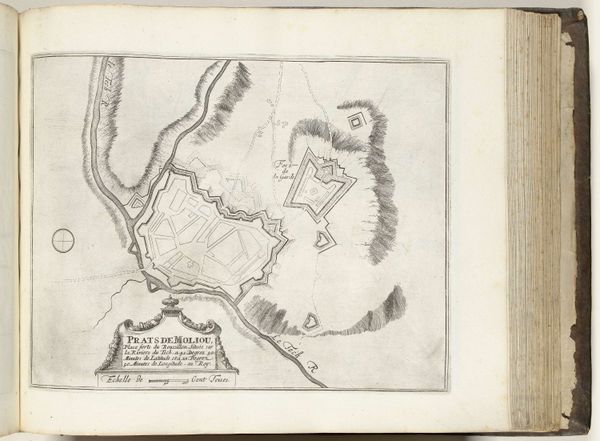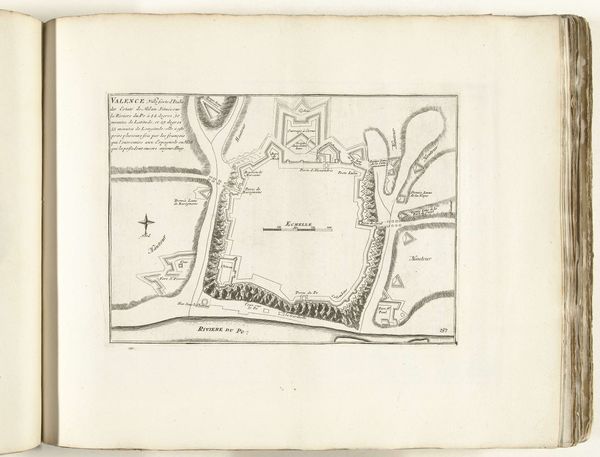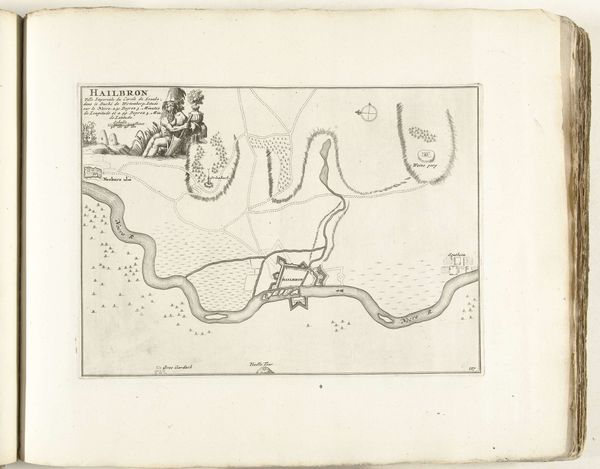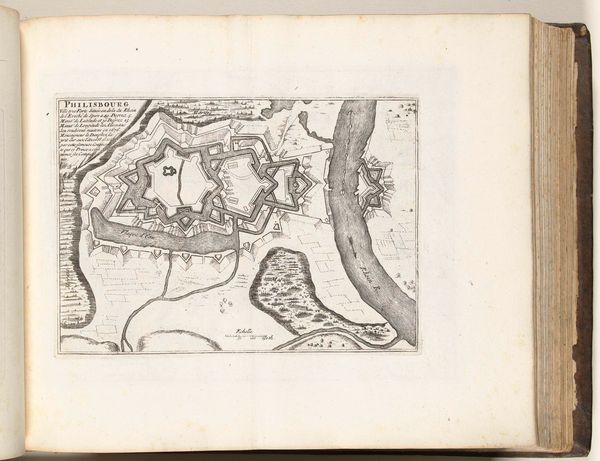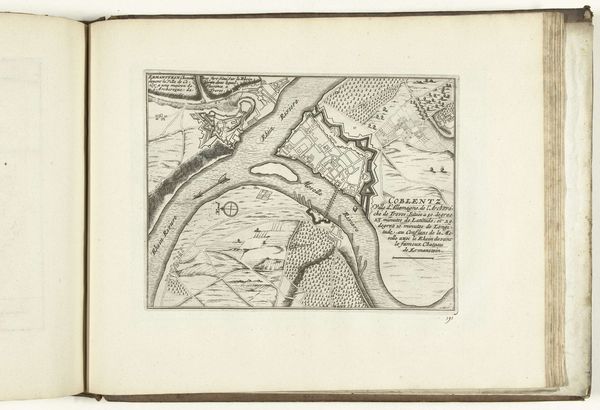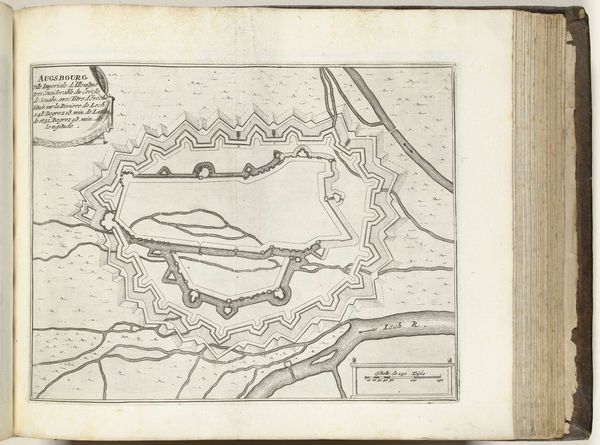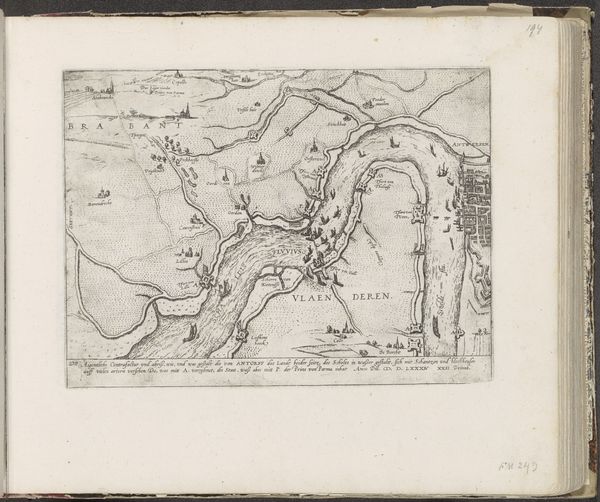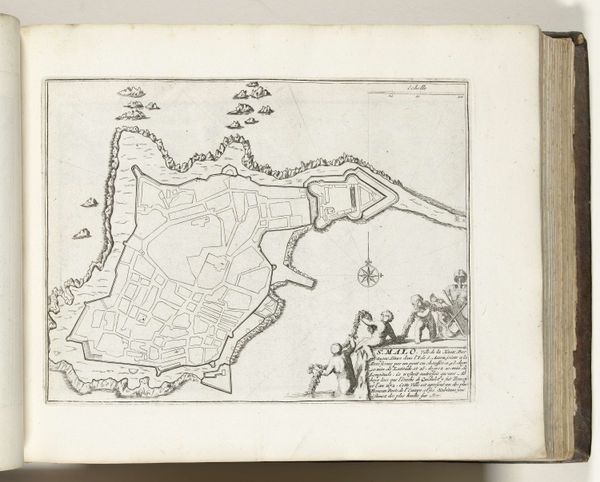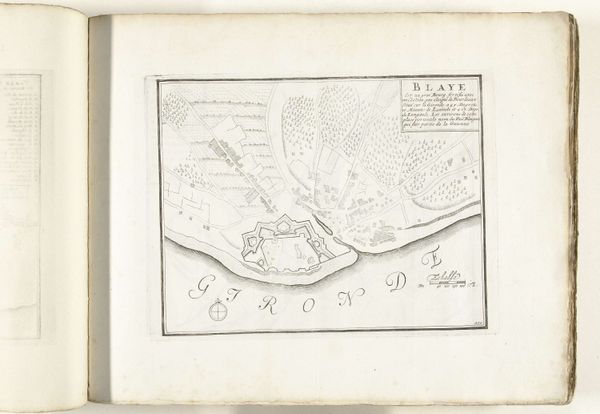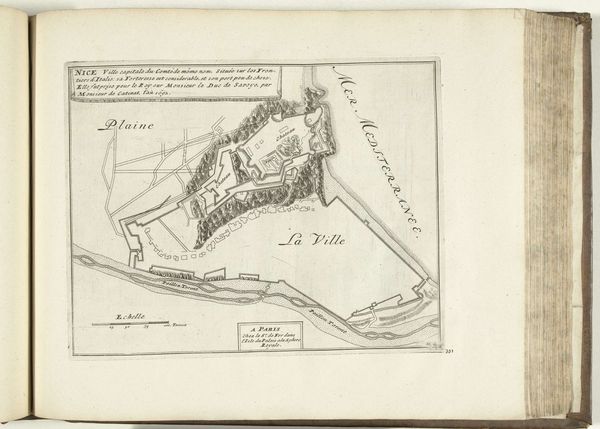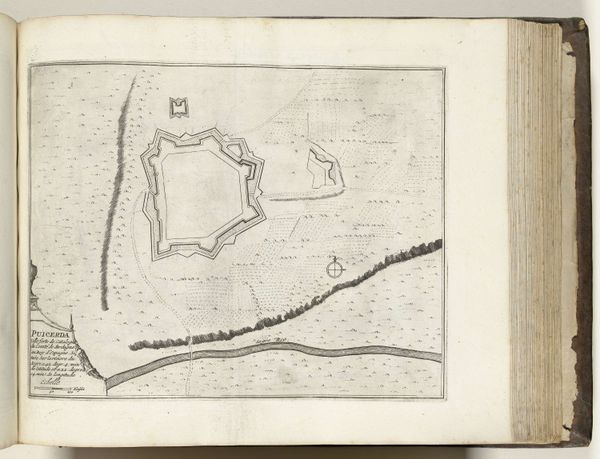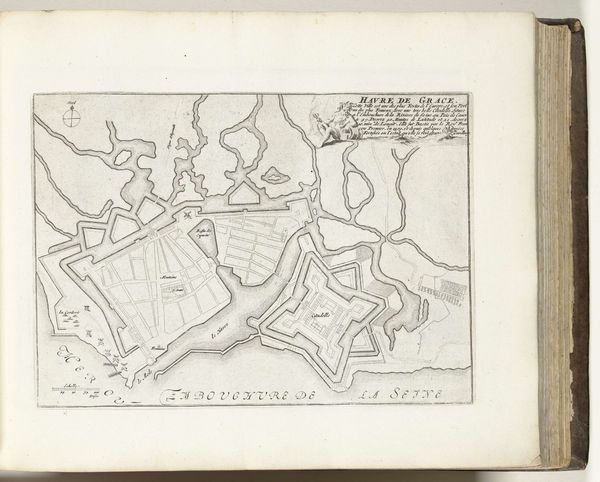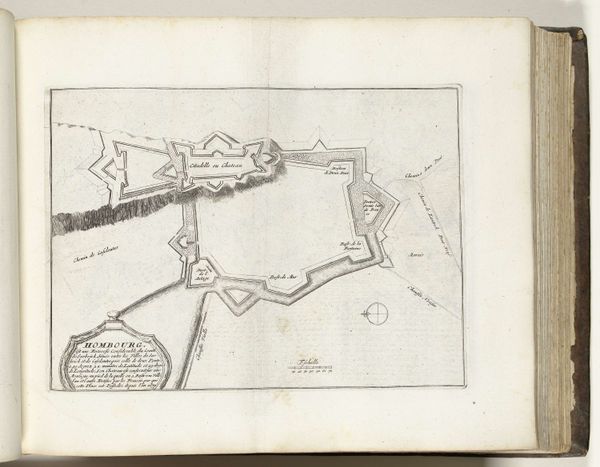
drawing, ink, pen
#
drawing
#
aged paper
#
toned paper
#
light pencil work
#
medieval
#
pen sketch
#
landscape
#
personal sketchbook
#
ink
#
ink drawing experimentation
#
pen-ink sketch
#
pen work
#
sketchbook drawing
#
pen
#
sketchbook art
Dimensions: height 230 mm, width 295 mm
Copyright: Rijks Museum: Open Domain
This is an anonymous drawing from around 1702, depicting a town plan of Prats-de-Mollo-la-Preste. Note the geometric precision of the fortifications, and the circular compass rose. The compass rose is a fascinating symbol, an echo of humanity's perennial quest for orientation. In medieval maps, the compass rose was not merely a navigational tool but an ornamental motif, indicating not only direction but also the winds, often depicted as cherubic faces blowing from different points. The image of wind deities can be traced all the way back to ancient Greek depictions of the winds, such as Boreas, the god of the north wind. Consider how the compass rose evolved from a mystical, almost divine symbol to a practical instrument. This shift mirrors our relationship with the world, from mythical understanding to a desire for precise, measurable control. The fortifications represent an aspiration for security and stability, yet they speak to a deeper, more primal human drive to define and defend territory. These desires reflect the complex interplay of culture, psychology, and history that shape the way we see and interact with the world.
Comments
No comments
Be the first to comment and join the conversation on the ultimate creative platform.
